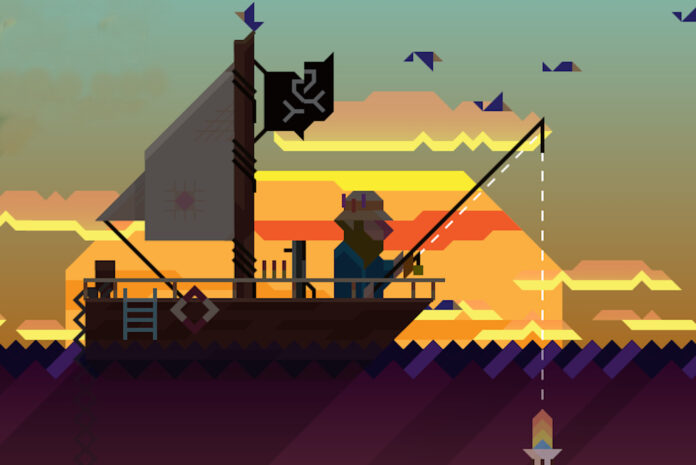This article is part of the game-dev advice newsletter Levelling the Playing Field by Rami Ismail. If you want to know more about the art, craft and science of game development, subscribe here. The newsletter is free but you can support the existence of LTPF with a small subscription fee.
Years ago, at the annual Penny Arcade Expo games convention, I was showing off an advanced prototype of Vlambeer’s Ridiculous Fishing. As part of the early organisational crew of Indie MEGABOOTH, I was running back and forth between the Vlambeer booth & my other responsibilities – which made me oddly anonymous as a developer to entire groups of people. We hadn’t quite figured out how to talk about Ridiculous Fishing, an enticing yet odd remake of an odd Flash game we’d made years earlier. All we knew was that we liked how handcrafted the game was.
At least, we hadn’t, until one PAX attendee showed up with a friend, pointed at the iPad, and said “this is the one, it’s the one where you go fishing with machine-guns and chainsaws and toasters”. And from that day on, Ridiculous Fishing was a handcrafted game about fishing with machineguns, chainsaws, and toasters.
I’m a very firm believer in that the simplest truths usually holds the deepest complexities, and this is no exception. At the heart of every aspect of game development sits a very simple truth: any truly successful game can be described in one or two sentences. Whether you call it a “USP” in your business, a “One-Liner” in marketing, or a “Core Vision” in creative – the point is simple: a good game has clarity, and coherence – and those can be communicated.
Describe it!
So, since that day at the Penny Arcade Expo, I have grown a belief that one of the very best way of figuring out a ton of things about your game is asking yourself a very simple question: “if someone had played my game & loved it so much they wanted to recommend it to a dear friend, but they forgot the title of the game, how would they describe it?“
The simplicity of that question is what makes it powerful: describing a game without knowing the name requires people to quickly move towards the most identifiable features or traits of the game. Where many developers define their game as “X meets Y“, most such pairings wouldn’t allow people to identify a particular game. Nor would “X but visual style Y” – unless it’s a very unique pairing. You’re forced to engage with what sets your game apart, or with the fact that nothing sets it apart.

Unforgiving and powerful
This also allows you to properly identify your strengths and other otherwise more ‘hidden’ traits – after all “The Supergiant Sports Game” could only be Pyre, building on the well-established brand of Supergiant, but some unknown indie studio’s take on tower defence could be any out of literally thousands of games. The exercise is unforgiving, and that makes it powerful.
When we’re creating, our gut feeling is usually ahead of our brains – and we could leave it that way until the end of a project, only to realize we already have an unspoken understanding of what we’re making when we adjust because it “feels better”. Making that understanding explicit can be a valuable step in solving issues with your design, marketing, or pitching.
Core vision
Defining how people could or would talk about your game is one potential way to narrow in your Core Vision, your Unique Selling Points, or your One-Liner – which means its a valuable exercise worth repeating occasionally throughout the entirety of the game’s development.
Actionables
- For three of your most favorite games, think of how you would recommend them to a friend if you forgot the title. As an example, mine would be “The pseudo-MMO about space zombies by the studio that made Halo”, “The horror game about the writer where you find pages that come true”, and “it’s that janky game where you fight thousands of truck-sized ants”.
- Notice that sometimes, you include the creator, sometimes the genre, and sometimes the aesthetic – consider what what you use in the recommendation says about the game and its context. How do these realisations relate to your game?
- For your game, figure out what the one sentence recommendation would be.

